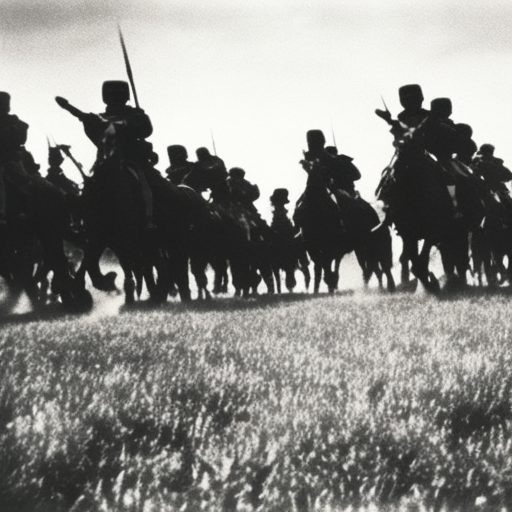Battle of Borodino: Napoleon’s Invasion of Russia
The Battle of Borodino, fought on September 7, 1812, was a major confrontation between the French army led by Emperor Napoleon Bonaparte and the Russian army commanded by General Mikhail Kutuzov. It was a pivotal event during Napoleon’s ill-fated invasion of Russia, known as the French invasion of Russia.
Background:
In 1812, Napoleon launched an invasion of Russia with the aim of forcing Tsar Alexander I to submit to his will. The French army, consisting of over 600,000 soldiers, advanced deep into Russian territory. However, the Russian army adopted a strategy of avoiding direct confrontation and instead employed a scorched-earth policy, burning and destroying everything in their path to deny the French army vital supplies.
Preparations:
The Battle of Borodino took place near the village of Borodino, about 70 miles west of Moscow. Both Napoleon and Kutuzov recognized the strategic importance of the location, as it lay on the road to Moscow. The Russian army, numbering around 120,000 troops, took up defensive positions along the Kolocha River, while the French army prepared to attack.
The Battle:
The battle began early in the morning of September 7, with the French launching a series of attacks on the Russian positions. The fighting was intense and lasted throughout the day. The Russian army, though outnumbered, put up a fierce resistance, inflicting heavy casualties on the French forces. The Russian artillery, in particular, played a crucial role in repelling the French attacks.
Key Moments:
– The Great Redoubt: One of the key moments of the battle was the French assault on the Great Redoubt, a fortified position held by the Russian army. Despite heavy losses, the French eventually managed to capture the redoubt, but the Russians quickly counterattacked and recaptured it.
– Bagration’s Death: Another significant event was the death of Russian General Pyotr Bagration, who was leading a crucial part of the Russian defense. His death weakened the Russian position and affected their overall strategy.
– The Grand Battery: The French artillery, known as the Grand Battery, unleashed a devastating barrage on the Russian lines, causing significant casualties. However, the Russian army managed to regroup and continue the fight.
Aftermath:
The Battle of Borodino was a bloody and inconclusive engagement. Both sides suffered heavy losses, with estimates ranging from 30,000 to 50,000 casualties on each side. Despite the Russian army’s resilience, they were forced to retreat, allowing Napoleon’s forces to advance towards Moscow.
However, the French victory at Borodino came at a high cost. The battle severely depleted Napoleon’s army, both in terms of manpower and supplies. Moreover, the Russian army’s refusal to engage in a decisive battle and the adoption of the scorched-earth policy made it difficult for the French to sustain their advance.
The Battle of Borodino is often seen as a turning point in Napoleon’s invasion of Russia. It weakened the French army and marked the beginning of their decline. The Russian army’s ability to withstand the French onslaught and their refusal to surrender boosted Russian morale and set the stage for the eventual Russian victory.
In conclusion, the Battle of Borodino was a critical battle during Napoleon’s invasion of Russia. It was a fierce and bloody confrontation that resulted in heavy casualties on both sides. While the French army managed to capture the field, their victory was costly and did not lead to the decisive outcome Napoleon had hoped for. The battle marked a turning point in the campaign and set the stage for the eventual Russian victory.












